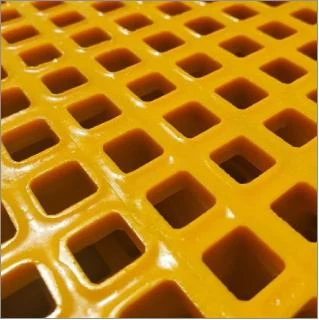loading...
- No. 9, Xingyuan South Street, Dongwaihuan Road, Zaoqiang County, Hengshui, Hebei, China
- admin@zjcomposites.com
- +86 15097380338
- Welcome to visit our website!
structural frp
Understanding Structural FRP Innovations in Construction Materials
In the ever-evolving field of construction and infrastructure, the pursuit of stronger, lighter, and more durable materials is paramount. Among the innovative advancements that have made waves in this sector, Fiber Reinforced Polymer (FRP) stands out as a remarkable solution for enhancing structural integrity and longevity. This article delves into the characteristics, advantages, applications, and future prospects of Structural FRP.
What is Structural FRP?
Fiber Reinforced Polymer (FRP) refers to a composite material made by combining a polymer resin with continuous fibers, such as glass, carbon, or aramid. These fibers provide the necessary strength and stiffness, while the resin binds them together and protects them from environmental factors. The combination yields a lightweight material with excellent tensile strength, corrosion resistance, and adaptability, making it a prime choice for structural applications.
Advantages of Structural FRP
One of the most compelling features of Structural FRP is its lightweight nature. Compared to traditional materials like steel or concrete, FRP is significantly lighter, which translates to easier handling, reduced transportation costs, and lower overall labor expenses. This characteristic also allows for more efficient designs, as less structural support is required.
Another key advantage is its resistance to corrosion. Traditional construction materials, such as steel, are susceptible to rust and degradation over time, particularly in harsh environments. FRP, on the other hand, shows remarkable resilience against chemicals, moisture, and UV radiation, which translates to lower maintenance costs and extended service life for structures.
The versatility of FRP also stands out. It can be molded into various shapes and sizes, allowing engineers and architects to utilize it in a wide range of applications. From bridges and building reinforcements to wind turbine blades and piping systems, the adaptability of FRP opens up new avenues for design and functionality in the construction industry.
Applications of Structural FRP
structural frp

The applications of Structural FRP are vast and varied. In civil engineering, it has been effectively used in bridge construction and rehabilitation. FRP reinforcing bars, sheets, and jackets can enhance the strength of existing concrete structures, while new builds benefit from the intrinsic properties of FRP, leading to lighter and more durable designs.
In building construction, FRP composites are increasingly employed in applications such as façades, flooring systems, and even structural beams. The ability to resist harsh environmental conditions makes them ideal for coastal structures and buildings in regions with extreme weather patterns.
Additionally, the transportation sector has seen significant benefits from FRP technology. Lightweight composite materials are utilized in vehicles and aircraft to improve fuel efficiency without compromising safety. Furthermore, in the energy sector, FRP is instrumental in the construction of wind turbine blades and other renewable energy structures, contributing to sustainability efforts worldwide.
Future Prospects
As industries continue to seek ways to improve efficiency and sustainability, the future of Structural FRP looks promising. Ongoing research is focused on developing advanced manufacturing techniques and improving the mechanical properties of FRP composites. Innovations such as bio-based resins and nano-reinforcements are paving the way for more sustainable and high-performance materials.
Moreover, the integration of smart technologies into FRP materials presents exciting possibilities. Smart composites, which can monitor stress and strain in real-time, could revolutionize structural health monitoring systems, providing invaluable data for maintenance and early detection of potential failures.
Conclusion
Structural Fiber Reinforced Polymer represents a significant advancement in construction materials, offering a myriad of benefits ranging from reduced weight and corrosion resistance to impressive adaptability and versatility. As industries continue to embrace this innovative material, the potential applications and technologies surrounding FRP are bound to expand, leading to safer, more efficient, and sustainable infrastructure for the future. The journey of FRP in the construction realm is just beginning, and its possibilities are truly limitless.
-
The Rise of FRP Profiles: Strong, Lightweight, and Built to LastNewsJul.14,2025
-
SMC Panel Tanks: A Modern Water Storage Solution for All EnvironmentsNewsJul.14,2025
-
GRP Grating: A Modern Solution for Safe and Durable Access SystemsNewsJul.14,2025
-
Galvanized Steel Water Tanks: Durable, Reliable, and Ready for UseNewsJul.14,2025
-
FRP Mini Mesh Grating: The Safer, Smarter Flooring SolutionNewsJul.14,2025
-
Exploring FRP Vessels: Durable Solutions for Modern Fluid HandlingNewsJul.14,2025
-
GRP Structures: The Future of Lightweight, High-Performance EngineeringNewsJun.20,2025
